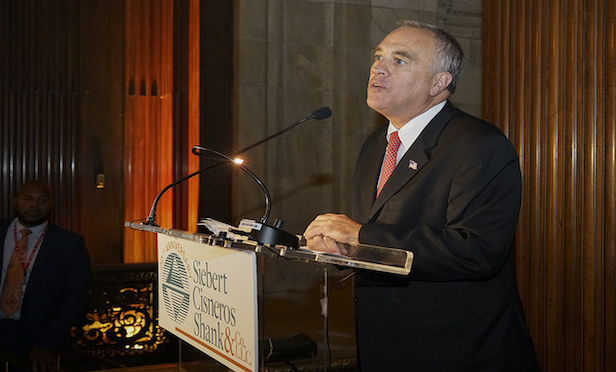© Touchpoint Markets, All Rights Reserved. Request academic re-use from www.copyright.com. All other uses, submit a request to [email protected]. For more inforrmation visit Asset & Logo Licensing.
DiNapoli Says NYC's Finances Remain Strong
The city projects budget gaps of $3.3 billion in Fiscal Year 2020, $2.9 billion in Fiscal Year 2021 and $2.3 billion in Fiscal Year 2022.
Trending Stories
Events
- Real EstateGlobeSt. ELITE Women of Influence (WOI) 2025July 21, 2025 - DenverGlobeSt. Women of Influence Conference celebrates the women who drive the commercial real estate industry forward.More Information
- Real EstateGlobeSt. Multifamily Fall 2025October 15, 2025 - Los AngelesJoin the industry's top owners, investors, developers, brokers & financiers at THE MULTIFAMILY EVENT OF THE YEAR!More Information
Recommended Stories
SL Green Raises $1B for Opportunistic Debt Fund
By Erika Morphy | July 18, 2025
It expects additional investor commitments to close in the coming weeks.
Vornado Realty Nabs $450M Refi of PENN 11 Office
By Anthony Russo | July 18, 2025
The move continues on its major deals in Manhattan in recent months.
$270M Phase of Affordable Housing Project in East New York Breaks Ground
By Anthony Russo | July 17, 2025
The redevelopment of the Christian Cultural Center’s campus is expected to create nearly 2,000 affordable apartments.
Resource Center

Report
Sponsored by TheGuarantors
2025 State of Renter Delinquency and Default
Renter default is a critical challenge. This report, based on a survey of 400+ multifamily professionals, reveals key trends, economic drivers, and mitigation gaps to help you build resilience in 2025. You'll gain insights into the root causes of renter default, the operational strains it can put on your portfolio, and strategies you can leverage to protect your investments and maintain stability.

Assessment
Sponsored by Building Engines
CRE Property Management Assessment: Your Building Operations Scorecard
How do your building operations measure up? Use this detailed scorecard to evaluate your operational approach across five key areas.

White Paper
Sponsored by TheGuarantors
5 Strategic Moves to Protect Your Multifamily NOI in 2025's Squeeze
Skyrocketing economic uncertainty means it’s essential for multifamily owners and operators to strengthen risk mitigation capabilities. Discover expert insights from industry experts, including the President of NMHC, to tackle 2025 challenges such as slower lease-ups, cost pressures, renter fraud, high reliance on concessions, and more.





